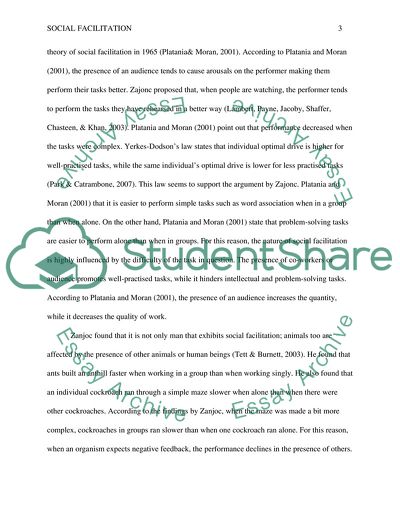Cite this document
(Social Facilitation Coursework Example | Topics and Well Written Essays - 1750 words, n.d.)
Social Facilitation Coursework Example | Topics and Well Written Essays - 1750 words. https://studentshare.org/psychology/1857856-why-does-the-presence-of-others-improve-individual-performance-in-some-situations-but-inhibit-it-in-others-discuss-in-relation-to-theories-of-social-facilitation
Social Facilitation Coursework Example | Topics and Well Written Essays - 1750 words. https://studentshare.org/psychology/1857856-why-does-the-presence-of-others-improve-individual-performance-in-some-situations-but-inhibit-it-in-others-discuss-in-relation-to-theories-of-social-facilitation
(Social Facilitation Coursework Example | Topics and Well Written Essays - 1750 Words)
Social Facilitation Coursework Example | Topics and Well Written Essays - 1750 Words. https://studentshare.org/psychology/1857856-why-does-the-presence-of-others-improve-individual-performance-in-some-situations-but-inhibit-it-in-others-discuss-in-relation-to-theories-of-social-facilitation.
Social Facilitation Coursework Example | Topics and Well Written Essays - 1750 Words. https://studentshare.org/psychology/1857856-why-does-the-presence-of-others-improve-individual-performance-in-some-situations-but-inhibit-it-in-others-discuss-in-relation-to-theories-of-social-facilitation.
“Social Facilitation Coursework Example | Topics and Well Written Essays - 1750 Words”. https://studentshare.org/psychology/1857856-why-does-the-presence-of-others-improve-individual-performance-in-some-situations-but-inhibit-it-in-others-discuss-in-relation-to-theories-of-social-facilitation.


